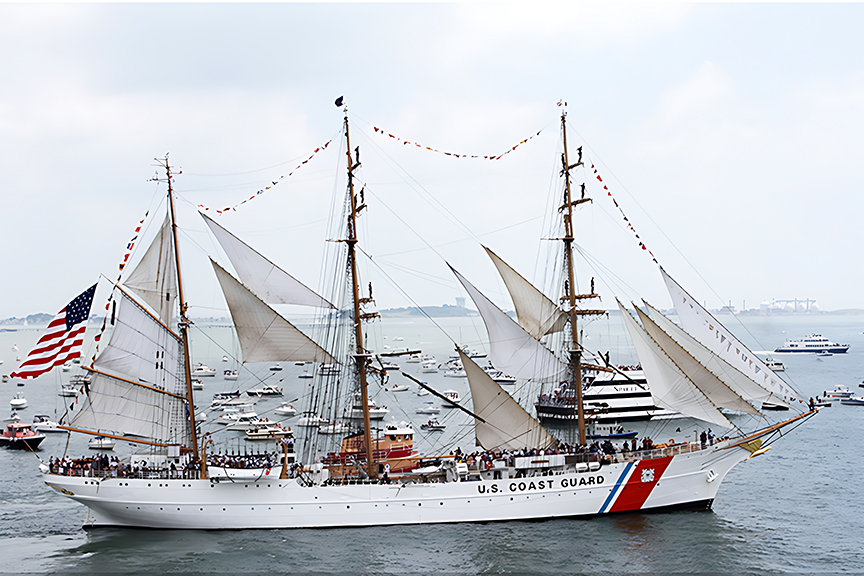Then and Now: Shanghaiing was alive in Astoria
Published 5:00 pm Wednesday, June 22, 2011
Vera Gault wrote this column at the end of the fourth season of Shanghaied in Astoria, August 1988.
One of the lively events of this summer has been the melodrama Shanghaied in Astoria, which ended its season last week after 18 hilarious performances.
It recalled in comedic style a situation related to the history of our town.
There actually were shanghaiings in Astoria many of them.
It is apparent from the term that the practice started In Shanghai, one of Chinas largest seaports, when laborers were needed for West Coast railroading and mining. Its effects showed up here in the 1870s and 1880s when agents in China kidnapped workers for Astorias booming salmon canneries.
When ships crossing the bar with these illegal entrants got word that federal officers were waiting to inspect ships, the labor bosses chained their victims and threw them overboard, thus destroying the evidence of their lawbreaking.
Shanghaiing done in Astoria meant that men taken by force from streets, woods, fields and fishing boats were pressed into service at sea, often to replace those sailors who jumped ship when they arrived in port.
To build up their depleted crews, ships captains would pay runners, or crimps, all the way from $10 to $200 for each unfortunate fellow they managed to deliver. Astoria was a dangerous place when ships came in.
Local history is filled with incidents relating some of these dangers. In her book The Trail Led North, Martha McKeown (Mrs. Marshall Dana) gives the firsthand account of her uncle, Monte Hawthorne, who lived here in the early days. Men going to and from work at the canneries carried loaded guns to protect themselves against shanghaiers.
How they captured men
Even when they met other workers, they would eye one another carefully, each with his hand on his revolver. Night crews were in special danger, but snatchings occurred even in midday when two men would grab a loner, tie him and transport him to a waiting ship.
In other instances, saloons and sailors boarding houses on pilings had trap doors and shanghai chutes to drop a drunken sailor into a boat. The runner would deliver the victim to a ship at anchor, collect the blood money and return to split it with the saloon keeper.
The story is told of a woman who ran an establishment on Commercial Street. She dropped her husband down for $100. He returned from Liverpool two years later. Within two weeks, he was found dead with a bump on his head near a pile of planking stacked out to repair the street. The grieving widow sued the city for $75,000. In court, the district attorney is reported as saying, You sold him once for $100. You must think hes worth more dead than alive. She was awarded $100.
Crimps not only collected blood money, they also found ways to cheat sailors out of their wages. They would act as employment agents to get some penniless fellow a job on a ship, then collect his wages in advance, sometimes splitting with the captain. Sailors starting on a trip signed papers that they would stay on for the duration. If they deserted, they lost their wages.
Crimps at work
An article written by Bunco Kelly, a notorious crimp who worked the docks in Portland and Astoria, tells of captains nearing the end of a voyage who would brutalize their underlings to make them escape, thus forfeiting their wages. Bunco, who got his name because of his habit of collecting money for crews he never delivered, wrote his memoirs while serving a life sentence for murder.
He called Astoria the wickedest city in the world, worse than New Orleans. He told of the practice crimps had of waiting for a ship to dock, grabbing sailors as they jumped ship, and returning them for a fee. Once on ship again, they were beaten as an object lesson for other sailors with like intentions. He told of seeing in San Francisco four escapees returned and hanged from the yardarm to deter others from deserting.
Actually, come to think about it, after the passing of 100 years, some shanghaiing incidents may make us smile a little. For instance; Kelly himself was once shanghaied. He jumped ship in San Francisco, worked his way back to Portland where he was convicted of a murder which he claimed he didnt commit.
After Kelly served 12 years of his life sentence, Gov. George Chamberlain pardoned him. He returned to Astoria where he admonished men to go to work and be good citizens, for there sure is a curse on sailor business.
Tales of disappearance
Also on the lighter side is an incident related in Monte Hawthornes story. This concerns the Rev. George Grannis, pastor of the Methodist Church, which in 1890 stood on pilings in what we now call the Safeway block. He was a large man who had done some prize fighting in his earlier years.
Now on a stormy night he climbed the stairway inside the church to ring the bell for prayer meeting. As he backed down, two runners thinking they had the usual janitor threw an overcoat over the pastors head and started to tie his feet. He, kicking and punching, managed to roll the two down the stairs and out the door. He then conducted the service with torn clothes and bleeding fists. The next day he gave the overcoat to the janitor, and a runner was seen in town minus three front teeth.
I heard another shanghaiing tale the other day. A big, red-haired Irishman around town was a powerful swimmer. He teamed up with another swimmer. Together they reversed the shanghaiing business
The Irishman would tie up his friend, deliver him for a $100 fee and return to shore. The friend would loose his ropes and swim underwater back to their meeting place where they split the fee. They collected several hundred dollars shanghaiing each other when different ships came to port.
Desertion decriminalized
As I was completing my research at the library, Liisa Penner directed me to a manuscript on shanghaiing written by Denise Alborn for her senior thesis at the University of Oregon. Denise, a 1979 graduate of Astoria High School, is the daughter of well-known Astorians Russell and Rita Alborn. I found that she and I had used some of the same sources in compiling our papers.
I especially liked her conclusion. She explained that the LaFollette Act of 1915 is known as the Magna Carta of seamen. It among other things abolished criminal prosecution for desertion and forbade wages paid in advance. She also noted that the development of steamships required higher skills and continuity of service for ships crews. She concluded, By 1915, the age of shanghaiing and sailors abuses was over. A man no longer needed to walk the streets of Astoria with one hand on a revolver.





